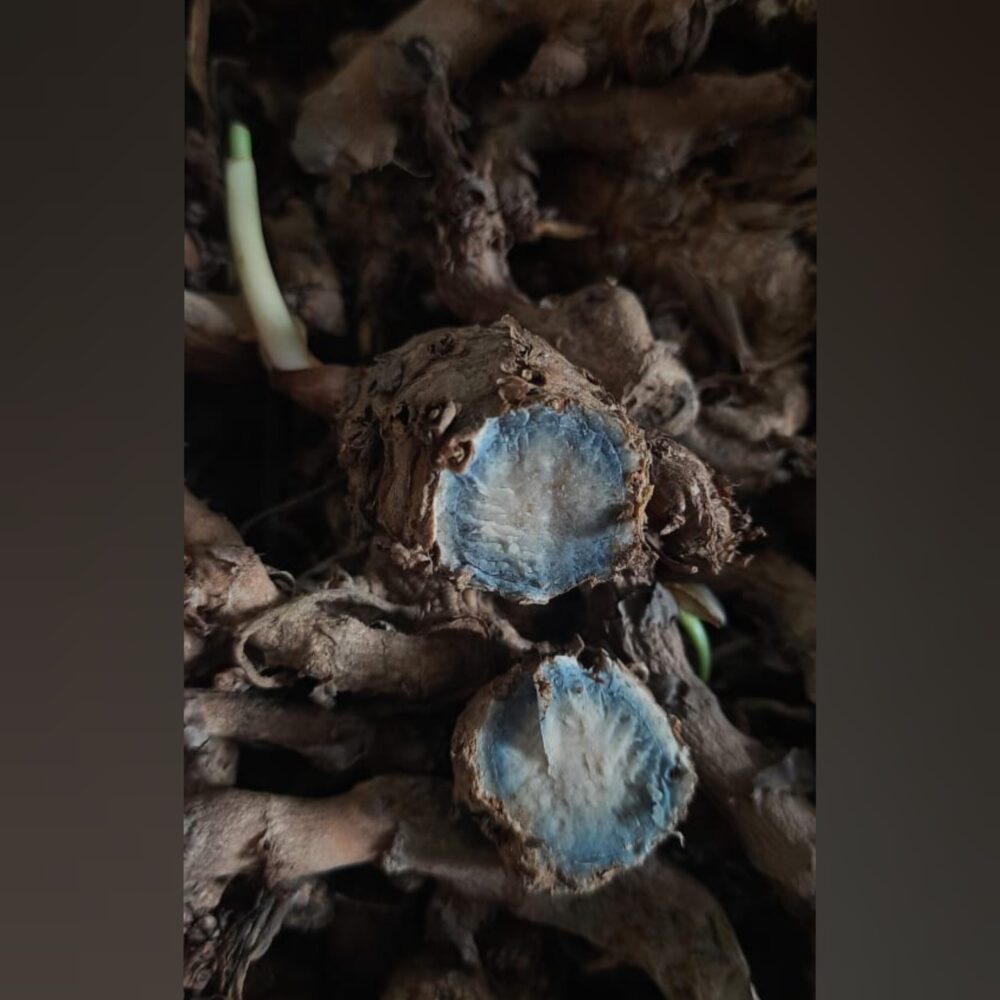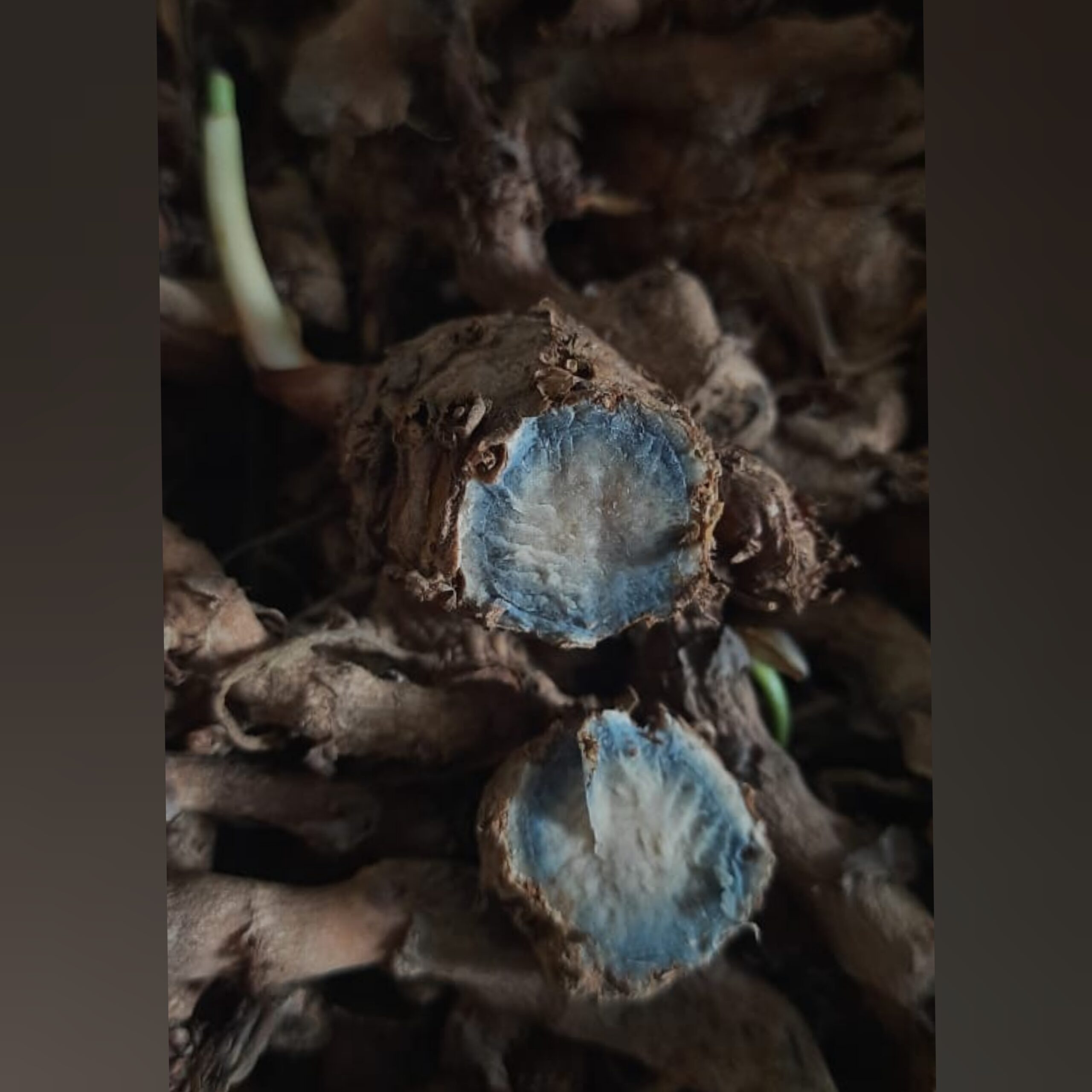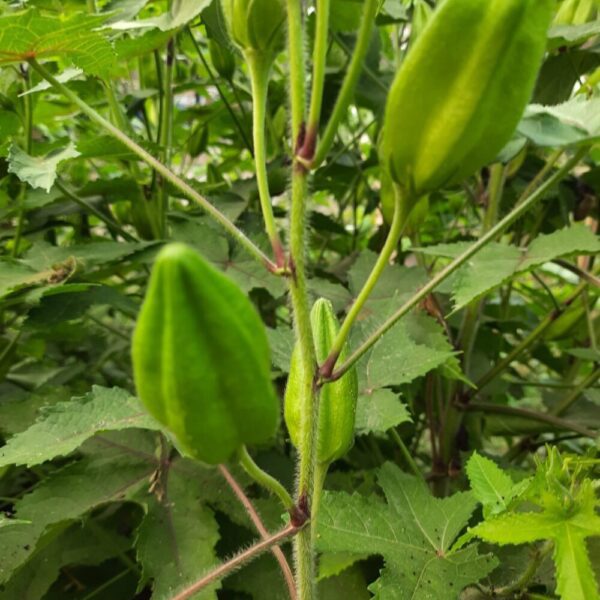Black Turmeric Rhizome Seeds
Black Turmeric Rhizome Seeds
Quantity: 500 grams
Black turmeric (Curcuma caesia) is a unique and powerful plant with medicinal benefits, a distinct flavor, and cultural significance. Whether you’re interested in growing it for health reasons, culinary uses, or simply as a beautiful addition to your garden, it’s an excellent plant to cultivate. Explore the world of black turmeric and unlock its many uses and benefits!
Black Turmeric Rhizome Seeds
Out of stock
Black Turmeric (Curcuma caesia) – A Unique and Powerful Root for Medicinal and Culinary Uses
Black turmeric (Curcuma caesia) is a rare and distinctive variety of turmeric, native to the tropical regions of India and Southeast Asia. Known for its deep blue-black rhizomes and strong medicinal properties, black turmeric is gaining popularity in both traditional medicine and modern wellness circles.
Unlike the more commonly known yellow turmeric (Curcuma longa), black turmeric has a unique appearance and potent health benefits that set it apart. It is often referred to as “Krishna Haldi” in India, where it has been used for centuries in various healing rituals, medicinal treatments, and spiritual practices.
Let’s explore what makes black turmeric so unique and how you can grow it, use it, and benefit from its properties.
What is Black Turmeric?
- Scientific Name: Curcuma caesia
- Common Names: Black Turmeric, Krishna Haldi, Kala Haldi, Blue Turmeric
- Family: Zingiberaceae (the same family as ginger and regular turmeric)
- Native to: India, Nepal, Bangladesh, and parts of Southeast Asia
- Appearance: The rhizomes of black turmeric have a dark blue to black color on the outside, with a bluish-purpleor grayish-white interior. The plant itself grows similarly to regular turmeric, producing large, beautiful flowersand broad, lance-shaped leaves.
Black turmeric is often grown in humid, tropical conditions, where it thrives in rich, loamy soil with good drainage. It’s a perennial plant, meaning it can continue to produce rhizomes year after year once it’s established.
Key Features and Benefits of Black Turmeric
1. Distinctive Appearance and Flavor
- Black turmeric is visually striking due to its dark, almost black rhizomes, which can be mistaken for a completely different plant. The rhizomes have a mild, earthy flavor when used in cooking, though its primary value is in its medicinal and therapeutic uses.
2. Potent Medicinal Properties
- Anti-inflammatory: Black turmeric contains bioactive compounds like curcumin (found in yellow turmeric) and demethoxycurcumin, which have powerful anti-inflammatory effects. It’s often used to treat conditions like arthritis, muscle pain, and joint inflammation.
- Antioxidant: Rich in antioxidants, black turmeric helps combat oxidative stress and can support overall health and longevity by protecting cells from damage.
- Pain Relief: The plant is used in traditional medicine for its analgesic properties, particularly for treating painful conditions like headaches, toothaches, and injuries.
- Digestive Aid: Just like its yellow counterpart, black turmeric is thought to support digestion, relieve gas and bloating, and promote gut health.
- Respiratory Health: Black turmeric has been used in Ayurvedic and traditional remedies for treating respiratory issues like asthma, bronchitis, and coughs. It’s often consumed in teas or tinctures to clear the airways.
- Antimicrobial and Antibacterial: Due to its natural antimicrobial properties, black turmeric is used to treat wounds, cuts, and skin infections. It can also be applied as a topical paste to heal skin irritations or rashes. Black Turmeric Rhizome Seeds.
3. Culinary Uses
- While black turmeric is not as widely used in cooking as its yellow counterpart, it has some culinary applicationsin Southeast Asian cuisines.
- The rhizomes can be used fresh, dried, or ground into a powder. It has a more earthy, pungent flavor compared to regular turmeric and can be added to curries, soups, or pickles for its unique flavor and color.
- In some regions, black turmeric is used to flavor rice dishes and curry pastes or as a spice mix in traditional cooking.
4. Spiritual and Ritual Significance
- In many cultures, black turmeric is considered a sacred plant. In Hinduism and Buddhism, black turmeric is used in spiritual ceremonies and rituals due to its association with good luck and purification. It is sometimes used in prayers, offerings, and meditation rituals.
- The root is also used in traditional Ayurvedic medicine for balancing energy and promoting mental clarity. Black Turmeric Rhizome Seeds.
How to Grow Black Turmeric (Curcuma caesia)
Black turmeric is relatively easy to grow in the right conditions. If you’re in a tropical or subtropical area, growing black turmeric can be a rewarding addition to your garden. Here’s how to grow it:
1. Climate and Growing Conditions
- Tropical and subtropical climates with high humidity and warm temperatures are ideal for growing black turmeric. It thrives in temperatures between 25-30°C (77-86°F).
- The plant prefers partial to full sun, though it can tolerate some shade. It is a shade-loving plant in regions with hot, direct sunlight.
- Soil: Black turmeric grows best in well-drained, loamy soil with plenty of organic matter. The soil should be slightly acidic to neutral (pH 6.0-7.0). You can improve soil quality by adding compost or well-rotted manure.
2. Planting Black Turmeric
- Black turmeric is usually propagated from rhizomes (root cuttings) rather than seeds. Choose healthy, plump rhizomes with visible buds or growth points.
- Plant the rhizomes about 3-4 inches deep in the soil, spacing them about 12-18 inches apart to allow the plants ample room to spread. Black Turmeric Rhizome Seeds.
- If growing in containers, use a large, deep pot with good drainage. Black Turmeric Rhizome Seeds.
3. Watering and Maintenance
- Black turmeric requires consistent moisture but should never be waterlogged. Regular watering is essential, especially in hot weather. Keep the soil moist but ensure good drainage to prevent root rot.
- The plant benefits from being mulched around the base to retain moisture and regulate soil temperature. Black Turmeric Rhizome Seeds.
4. Fertilization
- Black turmeric benefits from organic fertilizers such as compost, worm castings, or manure. You can apply a balanced fertilizer once a month during the growing season to support healthy growth.
- Avoid excessive nitrogen, as it may encourage leaf growth at the expense of rhizome development. Black Turmeric Rhizome Seeds.
5. Harvesting Black Turmeric
- Black turmeric takes around 8-10 months to reach maturity. The rhizomes will grow underground and should be harvested when the plant’s leaves begin to die back.
- Gently dig up the mature rhizomes, being careful not to damage them. You can use a garden fork or spade to lift the rhizomes from the soil.
6. Storage and Preservation
- After harvesting, black turmeric rhizomes can be stored in a cool, dry place for several weeks.
- You can dry the rhizomes by cutting them into smaller pieces and hanging them in a well-ventilated area or using a dehydrator. Once dried, they can be ground into a powder or used as is for various purposes. Black Turmeric Rhizome Seeds.
Why Grow Black Turmeric?
- Unique Flavor: Its distinct taste makes black turmeric a special addition to your spice collection, offering an earthy, pungent flavor that enhances your culinary creations.
- Health Benefits: The medicinal properties of black turmeric, including its anti-inflammatory, antioxidant, and digestive benefits, make it a valuable plant for natural health remedies.
- Aesthetic Appeal: Black turmeric’s striking blue-black rhizomes and lush green foliage make it an attractive addition to any garden. Black Turmeric Rhizome Seeds.
- Cultural and Spiritual Significance: Grow black turmeric not only for its health benefits but also for its deep cultural significance in many parts of the world. Black Turmeric Rhizome Seeds.
Why Buy Black Turmeric Rhizomes or Seeds from Hoogaseeds?
- Premium Quality: At Hoogaseeds, we offer high-quality, disease-free rhizomes of black turmeric, hand-selected for optimal growth and yield. Black Turmeric Rhizome Seeds.
- Sustainable and Non-GMO: Our rhizomes are non-GMO and sourced sustainably to ensure the best growing experience.
- Easy Ordering: Shop for black turmeric rhizomes easily on our website at www.hoogaseeds.com/shop and enjoy fast shipping directly to your door.
Conclusion
Black turmeric (Curcuma caesia) is a unique and powerful plant with medicinal benefits, a distinct flavor, and cultural significance. Whether you’re interested in growing it for health reasons, culinary uses, or simply as a beautiful addition to your garden, it’s an excellent plant to cultivate. Explore the world of black turmeric and unlock its many uses and benefits!
Black Turmeric Rhizome Seeds
| Weight | 650 g |
|---|









Reviews
There are no reviews yet.